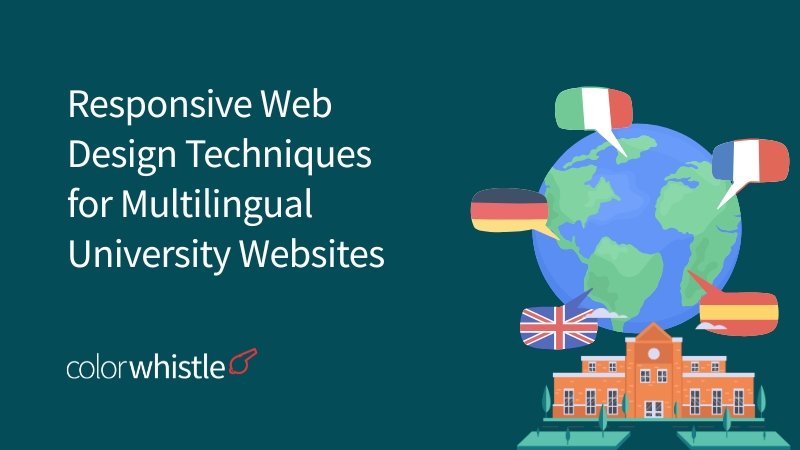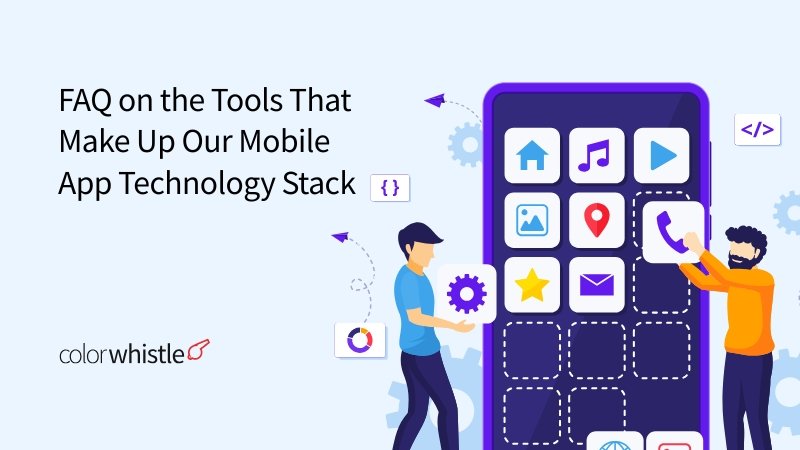Higher education institutions face unprecedented competition in attracting students from around the globe. Responsive web design has become essential for university websites, ensuring optimal viewing experiences across smartphones, tablets, and desktop computers. With prospective students increasingly relying on mobile devices to research educational opportunities, universities cannot afford websites that fail to adapt seamlessly to different screen sizes.
Multilingual university websites serve as digital gateways for international student recruitment, breaking down language barriers that traditionally limited institutional reach. Universities implementing comprehensive multilingual support witness significant increases in international applications, as students feel more confident navigating content in their native languages.
The intersection of responsive design and multilingual functionality presents unique challenges that shape the UI / UX Future of Design in higher education:
- Technical complexity increases when managing multiple languages across various device formats
- Cultural considerations influence navigation patterns and content presentation preferences
- Performance optimization becomes critical when serving diverse global audiences
- Accessibility standards must accommodate different writing systems and reading directions
Universities that master these challenges unlock tremendous opportunities. They can reach previously untapped markets, enhance their global reputation, and create inclusive digital experiences that reflect their commitment to diversity. The institutions that invest in sophisticated responsive multilingual websites position themselves as forward-thinking leaders in the competitive landscape of international education.
In addition to these digital transformations, the advent of the Metaverse is also making waves in education. This immersive virtual environment is not just limited to higher education but is also upgrading K-12 education, enhancing learning through innovative teaching methods.
Furthermore, as universities aim to attract more international students, they can draw inspiration from successful travel marketing campaigns worldwide. These campaigns often employ creative strategies that could be beneficial for educational institutions looking to expand their reach.
On a different note, the rise of e-commerce platforms like Shopify has led many educational institutions to consider redesigning their online stores for better user experience and increased conversions.
Lastly, with many universities utilizing WordPress for their websites, encountering issues is common. However, most of these common WordPress problems have been solved with available online resources.
Understanding Responsive Web Design for Universities
Responsive design is a web development approach that makes websites look good on all devices, such as phones, tablets, and computers. It does this by using flexible layouts, images, and CSS media queries to adapt the website’s appearance based on the screen size and orientation.
Core Principles of Responsive Web Design
The foundation of responsive design rests on three fundamental principles:
Fluid grids that use relative units like percentages instead of fixed pixels
Flexible images that scale appropriately within their containing elements
Media queries that apply different CSS styles based on device characteristics
Mobile Accessibility for Prospective Students
Modern university applicants increasingly rely on mobile devices for their research and application processes. Statistics reveal that over 60% of prospective students begin their university search on smartphones, making a mobile-first approach essential for educational institutions.
Device compatibility becomes critical when considering that international students may access university websites through various devices with different screen resolutions, processing capabilities, and internet speeds. A responsive design ensures that course catalogs, application forms, and virtual campus tours remain functional whether viewed on a smartphone in Mumbai or a tablet in São Paulo.
Seamless User Experience Techniques
Implementing effective responsive design requires strategic consideration of multiple elements:
Navigation Optimization
- Collapsible hamburger menus for smaller screens
- Touch-friendly button sizes (minimum 44px for mobile)
- Simplified menu structures that prioritize essential information
Content Hierarchy
- Progressive disclosure techniques that reveal information based on screen real estate
- Readable typography that scales appropriately across devices
- Strategic use of white space to prevent cognitive overload
Performance Considerations
Optimized image delivery using responsive image techniques
Conditional loading of content based on device capabilities
Streamlined CSS and JavaScript to reduce load times
These techniques ensure that university websites maintain functionality and visual appeal regardless of how prospective students access them.
Leveraging Advanced Technologies for Enhanced User Experience
To further improve user experience, universities can explore the development of scalable AI-powered MVPs which allow for seamless integration and growth. Such technology can be particularly beneficial in personalizing the user experience based on individual preferences and behavior.
Moreover, incorporating robust API development practices can enhance the functionality of university websites by enabling smooth interaction between different software applications. This is especially important when integrating various online services such as course registration or virtual campus tours.
In addition to these strategies, universities should also consider the importance of having a strong mobile presence. With more students relying on their smartphones for information, it’s crucial to have a mobile-friendly website design. This includes optimizing website speed, ensuring easy navigation, and providing relevant content tailored for mobile users.
Finally, universities can also leverage the power of mobile apps to reach prospective students more effectively. By developing Android and iOS apps, educational institutions can provide students with easy access to necessary resources and information at their fingertips.
Catering to a Global Audience with Multilingual Support
Universities looking to expand their international reach must strategically implement multilingual content that resonates with diverse student populations. The foundation of effective global outreach begins with data-driven language selection based on comprehensive demographic analysis of target markets.
Strategic Language Selection
Identifying the right languages requires examining multiple data sources:
- Application statistics from previous years to identify top international student origins
- Market research on emerging educational destinations and student mobility trends
- Regional economic indicators that influence students’ ability to pursue international education
- Government partnerships and scholarship programs that may drive specific demographic interest
Universities should prioritize languages that align with their strategic enrollment goals while considering the return on investment for translation and maintenance costs.
Translation and Localization Excellence
Effective language localization extends beyond literal translation to encompass cultural adaptation and regional preferences. Navigation elements require particular attention, as menu structures and terminology vary significantly across cultures.
Content localization best practices include:
- Adapting academic program descriptions to reflect local educational frameworks and terminology
- Modifying application processes to accommodate different document standards and requirements
- Adjusting imagery and visual elements to represent diverse cultural backgrounds appropriately
- Implementing region-specific contact information and support hours
However, universities often face challenges in managing these localization efforts. This is where remote staffing can be a viable solution. By leveraging remote staffing, universities can access a global talent pool, allowing them to find professionals who are not only fluent in the target languages but also understand the local culture and educational framework.
Technical considerations play a crucial role in multilingual implementation. Right-to-left (RTL) languages such as Arabic and Hebrew require specialized CSS handling and layout adjustments. Multi-script languages demand careful font selection and character encoding to ensure proper display across all devices.
Universities must establish quality assurance protocols that include native speaker reviews, cultural sensitivity assessments, and regular content updates to maintain accuracy and relevance. Professional translation services specializing in educational content often provide superior results compared to automated translation tools, particularly for complex academic terminology and nuanced marketing messages. In this context, collaborating with a digital marketing agency experienced in multilingual content can further enhance their outreach efforts by ensuring that the translated content is effectively marketed to the intended audience.
Enhancing User Experience (UX) Across Languages in University Websites
Creating exceptional user experience across multiple languages requires strategic design decisions that accommodate diverse cultural expectations and reading patterns. Universities must develop intuitive navigation systems that remain consistent while adapting to language-specific requirements.
Designing Clear Content Organization for Linguistic Diversity
Effective content architecture varies significantly between languages due to text expansion, cultural information hierarchies, and reading behaviors. English content typically expands 20-30% when translated into Romance languages, while languages like German can increase content length by up to 35%. This expansion affects:
Menu structures – Dropdown menus must accommodate longer navigation labels
Button sizing – Call-to-action buttons require flexible dimensions
Grid layouts – Content blocks need responsive spacing to prevent overcrowding
Typography scaling – Font sizes and line heights must adjust for character density
Right-to-left languages such as Arabic and Hebrew demand complete interface mirroring, affecting not only text direction but also visual element placement, form field alignment, and navigation flow.
Streamlining Forms and Calls to Action
International students encounter numerous barriers when completing university applications and inquiries. Simplifying these touchpoints significantly improves conversion rates and reduces abandonment.
Form optimization strategies include:
- Progressive disclosure – Breaking lengthy forms into logical steps
- Cultural field adaptation – Adjusting address formats, phone number structures, and name field configurations
- Visual hierarchy consistency – Maintaining clear form progression indicators across languages
- Error message localization – Providing culturally appropriate validation feedback
The UI/UX Future of Design, similar to the latest UI/UX trends in automotive websites, emphasizes adaptive interfaces that learn from user behavior patterns across different linguistic groups. Universities implementing machine learning algorithms can personalize content presentation based on regional preferences, creating more engaging experiences for prospective international students while maintaining brand consistency across all language versions.
Leveraging User-Generated Content for Enhanced Engagement
Incorporating user-generated content into university websites can further enhance user engagement. This strategy not only enriches the content but also builds a sense of community among students by showcasing their experiences and perspectives.
Ensuring Accessibility Compliance in Multilingual University Websites
Accessibility standards are essential for creating inclusive digital experiences that cater to users with various abilities and needs. Universities must prioritize WCAG 2.2 compliance to ensure their multilingual websites remain accessible to students with visual, auditory, motor, or cognitive disabilities across all supported languages.
Critical Accessibility Requirements for Multilingual Environments
The complexity of maintaining accessibility increases significantly when supporting multiple languages. Each language version requires careful attention to:
- Screen reader compatibility with different text directions and character sets
- Keyboard navigation that adapts to varying language layouts and input methods
- Color contrast ratios that remain compliant across all language versions
- Alternative text descriptions for images that convey meaning in each supported language
Language-Specific Accessibility Considerations
Right-to-left (RTL) languages like Arabic and Hebrew present unique challenges for global accessibility. Navigation elements, form layouts, and interactive components must maintain their accessibility features while adapting to different reading patterns. Screen readers need proper language declarations to pronounce content correctly, requiring lang attributes for each text segment.
Font selection becomes crucial when supporting multiple scripts, as accessibility depends on legible typography that works across assistive technologies. Universities should test font rendering with screen magnification software and ensure adequate spacing between characters in complex scripts.
Implementation Strategies for Accessible Multilingual Design
Semantic HTML structure provides the foundation for accessible multilingual websites. Proper heading hierarchies, landmark regions, and form labels must translate effectively while maintaining their structural meaning. Skip navigation links require localization to provide meaningful shortcuts in each language.
Focus management becomes particularly important in multilingual interfaces where users switch between languages. Visual focus indicators must remain visible and consistent across different character sets and text directions. Interactive elements should provide clear feedback in the user’s selected language, ensuring that error messages, confirmation dialogs, and help text maintain accessibility standards while delivering culturally appropriate communication.
In addition to these strategies, leveraging technologies such as Flutter, known for its ability to create customized solutions that enhance user experience, can further aid in developing accessible multilingual university websites.
Implementing a Content Strategy for International Student Recruitment through Responsive Web Design Techniques
A content-first approach is essential for creating successful international student recruitment websites. Universities need to identify and prioritize content that directly addresses the needs and concerns of prospective international students. This includes making information about academic programs, admission requirements, scholarship opportunities, and campus life easily accessible on all devices.
Prioritizing Content That Resonates with Global Audiences
International students have specific information requirements that differ from domestic applicants:
- Visa and immigration guidance with step-by-step processes, such as those available on the U.S. visa website
- Cost of living calculators and financial aid options
- Student testimonials from their home countries or regions
- Career services and post-graduation employment statistics
- Cultural integration programs and international student communities
Responsive design ensures this critical content adapts seamlessly to mobile devices, where many international students conduct their initial research. Content hierarchy must remain consistent across screen sizes, with essential information accessible through thumb-friendly navigation patterns.
Leveraging Localized SEO for Regional Visibility
Implementing effective localized SEO strategies goes beyond simple translation and requires a deep understanding of regional search behaviors and cultural contexts. Universities should implement:
- Region-specific keyword research using tools like Google Keyword Planner for different countries
- Hreflang tags to signal language and regional targeting to search engines
- Local domain strategies or subdirectories for major target markets
- Cultural adaptation of meta descriptions and title tags that resonate with local audiences
Search engines prioritize websites that demonstrate relevance to specific geographic regions. Universities can enhance their visibility by creating location-specific landing pages that address unique concerns of students from different countries, such as recognition of local qualifications or specific partnership programs with regional institutions.
Incorporating techniques from successful omnichannel retail strategies like those used by Mizzen+Main could further improve these efforts. Such strategies can help connect online and offline resources effectively, improving overall user experience.
Content delivery networks (CDNs) support these SEO efforts by ensuring fast loading times across different regions, which directly impacts search rankings and user engagement rates. It’s important to note that while implementing these strategies, universities should also be wary of common misconceptions about web development. Understanding these myths about website development can help in making informed decisions during the process.
Moreover, as universities leverage technology for better service delivery, they might consider exploring specialized web development services like React.js, which offer resilient and business-specific solutions that could greatly enhance the functionality of their websites.
Using Dynamic Content to Engage Prospective Students on Multilingual University Websites
Dynamic content transforms static university websites into immersive experiences that captivate international audiences across multiple languages. Modern prospective students expect interactive elements that showcase campus life authentically, making multimedia integration essential for effective recruitment strategies.
Video Content and Virtual Campus Tours
Interactive video elements serve as powerful engagement tools that transcend language barriers. Universities can implement:
Multilingual video overlays with subtitles in target languages
360-degree virtual campus tours featuring audio narration in different languages
Student testimonial videos from diverse international backgrounds
Live streaming events with real-time translation capabilities
These multimedia elements must maintain responsive design principles, automatically adjusting video quality and interface elements based on device capabilities and regional bandwidth limitations.
Adaptive UI/UX Design Elements
The Future of Design in university websites emphasizes personalization through dynamic content delivery. Implementing geolocation-based content customization allows websites to display relevant information based on visitor location, such as:
- Region-specific admission requirements
- Local scholarship opportunities
- Time zone-appropriate contact hours
- Currency-converted tuition fees
Dynamic content management systems enable real-time updates across all language versions, ensuring consistency while allowing for cultural customization. Interactive elements like course comparison tools, application progress trackers, and personalized recommendation engines create engaging experiences that guide prospective students through their decision-making journey while maintaining optimal performance across diverse devices and network conditions.
Design Flexibility for Future Growth and Updates in Responsive Multilingual University Websites
Scalable design serves as the foundation for universities seeking to expand their digital presence without compromising functionality or user experience. Modern educational institutions require website architectures that adapt seamlessly to evolving academic programs, growing international partnerships, and changing multilingual requirements.
Modular Architecture Principles
Building websites with modular components enables universities to add new academic departments, course offerings, or alumni sections without disrupting existing functionality. This approach involves:
- Component-based design systems that maintain visual consistency across languages
- Flexible grid layouts that accommodate varying text lengths in different languages
- Reusable content templates for program descriptions, faculty profiles, and news articles
Language-Agnostic Content Management
Implementing content management systems that separate structure from presentation allows universities to introduce new languages efficiently. The architecture should support:
- Dynamic language switching without affecting page layout
- Expandable navigation menus that accommodate additional language options
- Scalable typography systems that handle diverse character sets and reading directions
Future-Ready Technical Infrastructure
Universities benefit from establishing technical frameworks that anticipate growth patterns. Key considerations include database structures that support unlimited language variations, API-driven content delivery for consistent updates across platforms, and responsive breakpoints that accommodate emerging device categories.
This strategic approach ensures that website expansions enhance rather than complicate the user experience for prospective international students. To achieve this level of flexibility and responsiveness in their websites, many universities are turning to professional services offered by some of the top website design agencies in Indiana.
Moreover, with the rise of e-learning and online courses, it’s crucial for universities to adopt effective digital marketing strategies tailored for the education sector. This includes understanding the Total Addressable Market (TAM) which can significantly influence the success of SaaS-based educational platforms. By exploring TAM for SaaS companies, universities can maximize their growth potential and impress investors with their scalability plans.
Optimizing Performance Across Regions through Effective Techniques in Responsive Web Design for Multilingual University Websites
Loading speed optimization becomes critical when serving multilingual content to prospective international students across different geographical regions. Universities must implement strategic performance enhancements to ensure their websites deliver consistent, fast experiences regardless of user location or device capabilities.
Content Delivery Networks (CDNs) for Global Reach
CDNs are the backbone of international website performance optimization. By distributing website assets across multiple server locations worldwide, universities can significantly reduce latency for users accessing content from different continents. Popular CDN providers like Cloudflare, AWS CloudFront, and Azure CDN offer specialized features for multilingual websites:
Geographic content routing that automatically serves users from the nearest server location
Language-specific caching that optimizes delivery of translated content
Image optimization that automatically compresses and formats media based on device capabilities
Advanced Caching Strategies
Effective caching mechanisms reduce server load while improving response times for returning visitors. Universities should implement multiple caching layers:
- Browser Caching enables static assets like CSS files, JavaScript libraries, and images to be stored locally on user devices. Setting appropriate cache headers ensures these resources load instantly on subsequent visits.
- Server-Side Caching stores frequently accessed database queries and rendered page content. This approach proves particularly valuable for multilingual sites where translation processes can be resource-intensive.
- Database Query Optimization reduces the computational overhead of serving localized content by implementing efficient indexing strategies for multilingual database tables.
Resource Compression and Minification
Implementing GZIP compression reduces file sizes by up to 70%, dramatically improving load times across all regions. Universities should compress HTML, CSS, JavaScript, and JSON responses while maintaining functionality across different language versions.
Code minification removes unnecessary characters from source files without affecting functionality, creating leaner assets that load faster on mobile devices commonly used by international students researching universities.
Monitoring and Improving Website Effectiveness: A Data-Driven Approach for International Student Recruitment on Multilingual University Websites
Analytics tracking is essential for understanding how international students use multilingual university websites. Google Analytics 4 offers detailed insights into user behavior across different language versions, helping institutions determine which content resonates most effectively with specific demographic groups. The platform’s advanced measurement capabilities track engagement metrics such as scroll depth, video interactions, and form completions across various linguistic interfaces.
Essential Metrics for Multilingual Website Performance
Universities should focus on tracking language-specific conversion rates to understand which versions drive the highest enrollment inquiries. Key performance indicators include:
- Page load times by geographic region and language
- Bounce rates across different linguistic versions
- User flow patterns from initial landing pages to application submissions
- Device usage statistics segmented by language preference
- Search query analysis for localized keyword performance
Advanced Analytics Implementation Strategies
Implementing UTM parameters for multilingual campaigns allows precise tracking of traffic sources and their effectiveness in different regions. Heat mapping tools like Hotjar or Crazy Egg reveal how users navigate through translated content, highlighting areas where the UI/UX Future of Design principles can be applied to enhance engagement.
Custom event tracking becomes particularly valuable for monitoring interactions with language switchers, downloadable resources in multiple formats, and virtual tour participation rates. These insights inform decisions about content prioritization and interface improvements.
Real-Time Monitoring and Optimization
Setting up automated alerts for significant traffic drops or spikes in specific language versions enables rapid response to technical issues or emerging opportunities. A/B testing different layouts, call-to-action placements, and content structures across language variants provides data-driven evidence for design decisions that improve international student recruitment outcomes.
Regular analysis of user session recordings helps identify friction points in the application process, particularly where language barriers or cultural differences may impact user experience.
Leveraging AI for Enhanced Marketing Automation in Education
Incorporating AI-driven marketing automation into these strategies can further revolutionize educational marketing efforts. This technology not only improves student engagement but also boosts enrollment figures by streamlining recruitment processes.
Moreover, embracing advanced CRM systems like GoHighLevel that utilize AI automation can significantly enhance customer management efficiency. Such systems enable smarter workflows, thus allowing institutions to scale their operations effectively while maintaining a personalized approach towards prospective students.
As we move forward into an era dominated by AI advancements, it’s imperative for educational institutions to experience Google AI features that are now available on Android devices. This integration of AI not only enhances productivity but also ensures personalized interactions that cater to the unique needs of each student.
Conclusion
The world of online higher education is constantly changing, and it needs advanced methods for responsive web design that can smoothly incorporate multiple languages. Universities that put money into complete responsive design plans will have an edge in the competitive market for international student recruitment.
The methods discussed here show how carefully applying responsive design principles can create strong connections with potential students from different cultural and language backgrounds. Every aspect, from using CDNs to ensure fast performance to making sure accessibility standards are met, plays a part in creating a seamless user experience that goes beyond borders.
Key success factors include:
- Prioritizing mobile-first design approaches that accommodate varying device preferences globally
- Implementing strategic content localization that respects cultural nuances
- Maintaining consistent performance standards across all supported languages
- Establishing data-driven monitoring systems for continuous improvement
The UI / UX Future of Design in educational institutions lies in creating adaptive, inclusive digital environments that respond intelligently to user needs. Universities that embrace these responsive multilingual design principles will find themselves better equipped to attract, engage, and convert international students.
Success in this area requires a continuous commitment to testing, improving, and refining. Investing in strong responsive multilingual websites will lead to better user engagement, higher conversion rates, and an enhanced reputation for institutions in the global education market.
FAQs (Frequently Asked Questions)
Why is responsive web design crucial for higher education websites?
Responsive web design ensures device compatibility and a seamless user experience across diverse screen sizes, making university websites accessible and engaging for prospective students using smartphones, tablets, or desktops.
How does multilingual support enhance international student recruitment on university websites?
Multilingual support attracts a global audience by providing content in relevant languages based on target demographics, improving accessibility and engagement for international students through effective translation and localization.
What are the best practices for designing an intuitive UX across multiple languages on university websites?
Designing clear content organization tailored to diverse linguistic audiences, simplifying forms and calls to action, and ensuring consistent navigation help create an intuitive user experience that caters to multilingual users effectively.
How can universities ensure accessibility compliance in their multilingual websites?
Adhering to accessibility standards such as WCAG 2.2, implementing strategies for accessible navigation and content presentation in multiple languages, and accommodating users with disabilities are essential for global accessibility compliance.
What content strategies optimize international student recruitment through responsive web design?
A content-first approach prioritizing relevant and popular information that resonates with international students, combined with localized SEO techniques, enhances search visibility and engagement across different regions.
How can universities optimize website performance globally for multilingual responsive sites?
Implementing loading speed optimization techniques such as caching strategies and utilizing Content Delivery Networks (CDNs) reduces load times worldwide, ensuring fast and reliable access to multilingual university websites.





